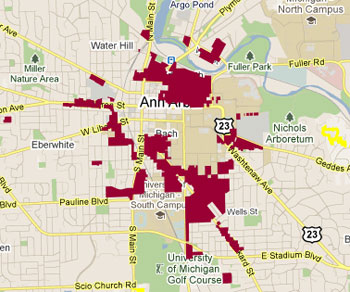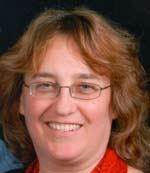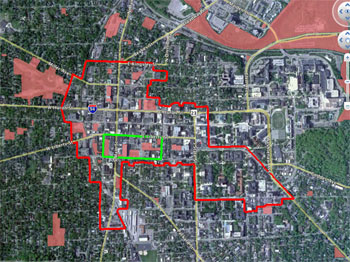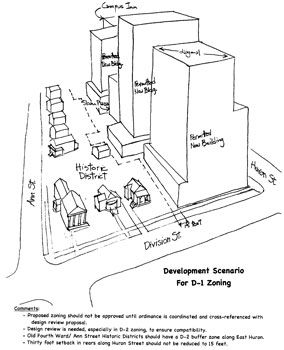A committee that’s worked for a year and a half to develop recommendations for zoning changes in Ann Arbor’s near-downtown residential neighborhoods has been unable to reach agreement. So it’s now likely that the city’s planning commission will weigh in on the controversial issue. The outcome of changes – if approved by the city council – could affect the density of residential development in the city.

The dark red areas are those areas zoned R4C in the city of Ann Arbor. (Image links to Google Map)
At a recent working session, planning commissioners were briefed on a draft report from the R4C/R2A advisory committee, which has been meeting since December 2009. Both kinds of zoning district were established in the 1960s: R4C allows for multiple-family residential dwellings, such as apartment buildings, while R2A zoning limits density to two-family residential structures. The committee was unable to reach consensus on its recommendations, nearly all of which relate to the R4C districts.
At the June 14 planning commission working session, two commissioners who serve on the committee – Jean Carlberg and Tony Derezinski – expressed frustration at the outcome. The draft recommendations don’t provide any guidance about where the city might encourage greater density, Carlberg said.
Derezinski, who is the city council’s representative to the planning commission, added that many committee members worked hard, but were interested in protecting what they’re used to, especially concerning density and parking in their neighborhoods. As it stands, he said, the report won’t be helpful to the city council. Derezinski supported the idea of having the planning commission study the issue and make its own recommendations.
Commissioner Evan Pratt suggested that the first question to ask is whether there should be greater density, and where – the answer to that would guide the recommendations.
In a follow-up phone interview with The Chronicle, Wendy Rampson – the city’s planning manager, who also attended the working session – said there are several possibilities that planning commissioners might pursue. They could discuss the report at one of their regular meetings and make their own recommendations or comments about it. Those recommendations and comments could be made either informally – communicated to the council via Derezinski – or through a formal resolution or memorandum.
Another option would be for the commission’s ordinance revisions committee to tackle it first, developing specific ordinance language that the full commission could then review and possibly recommend to the city council. Or commissioners could ask to hold a joint session with the council, she said, to talk through these issues directly.
Regardless of how the planning commission proceeds, Carlberg will no longer be at the table. The June 14 working session was her last meeting as a commissioner. Her term ends on June 30, and she did not seek reappointment. The former city councilmember served 16 years on the planning commission, overlapping with her 12 years (1994-2006) as a Democrat representing Ward 3 on the council. Eleanore Adenekan was nominated during the council’s June 20 meeting as a replacement for Carlberg – her nomination is expected to be confirmed at the council’s July 5 meeting. [Full Story]








